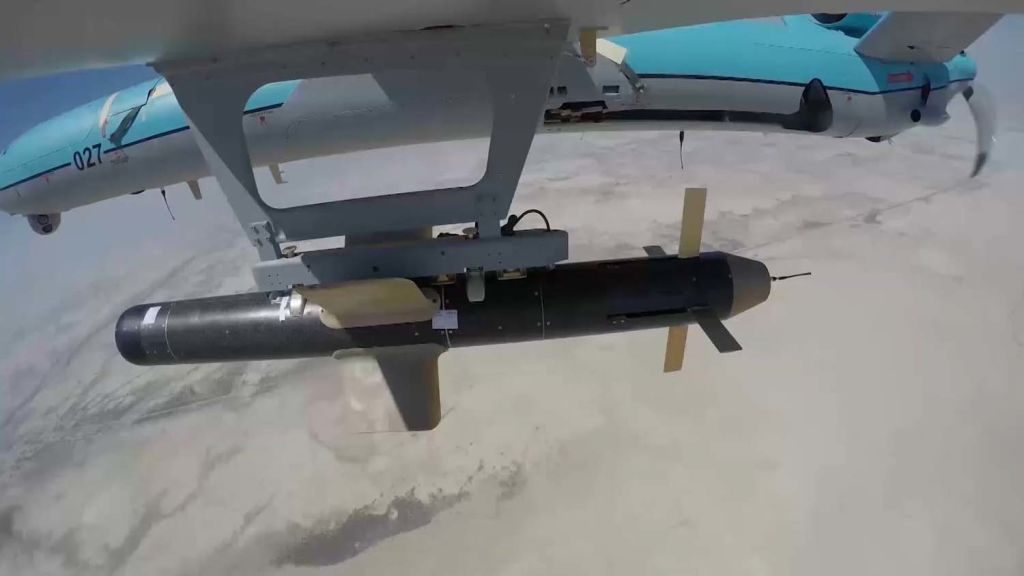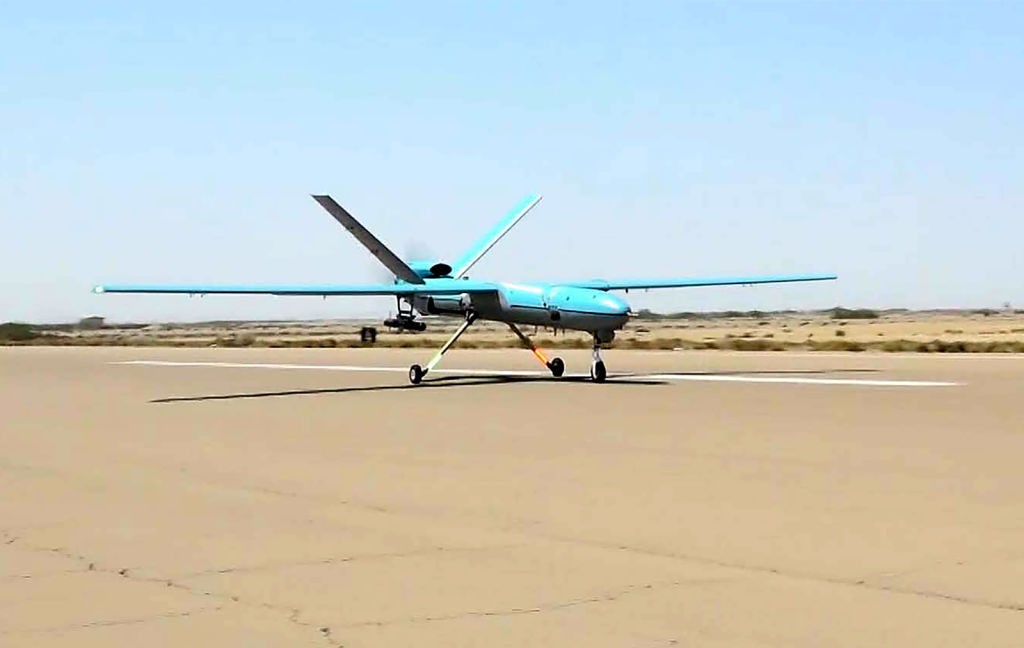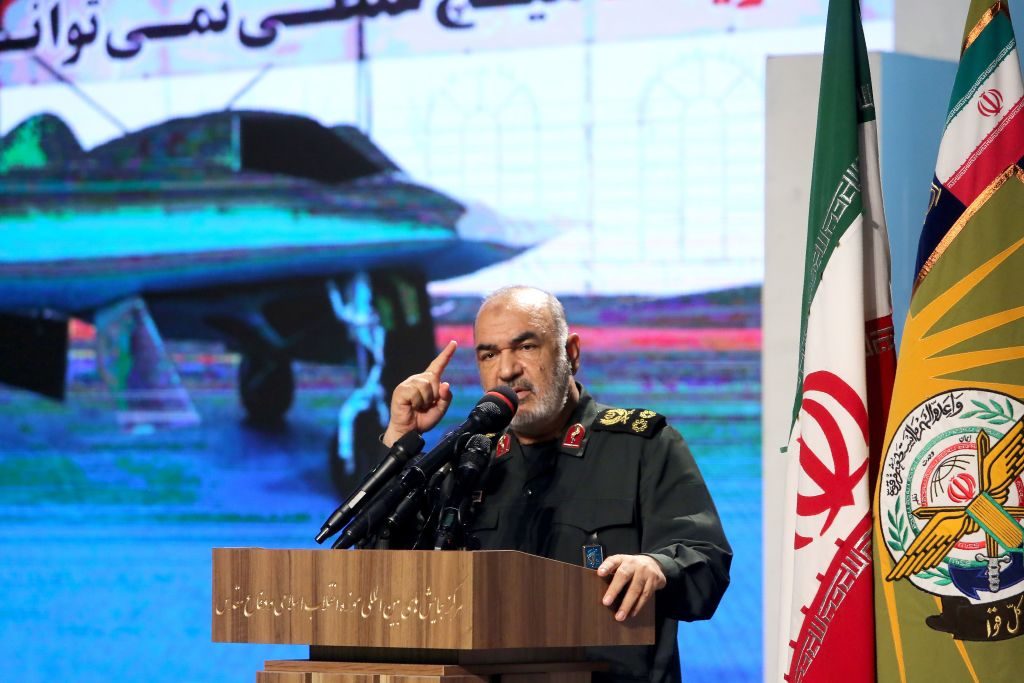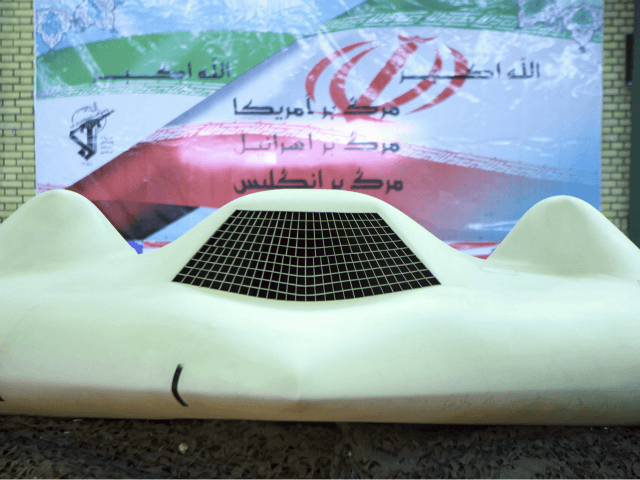Drones are the hot new item in the Middle East’s perpetual warfare, deployed by national armies, militias, and terrorist groups with increasing confidence and proficiency.
Turkey’s Bayraktar drones made a big splash in Syria and Libya in 2020, earning a reputation as reliable and affordable weapons. The Turkish military used Anka-S and Bayraktar TB2 drones to dominate Syrian army units and allied militia during Turkey’s “Operation Spring Shield” in Syria.
Turkey claims its drones were able to destroy hundreds of Syrian armored vehicles and artillery pieces, inflicting hundreds of casualties in the process, while only about half a dozen Turkish drones were lost in the engagements.
The performance of the Turkish drones is even more impressive when considering they were only used for a fairly short period of time. The heavier Anka-S drone was tasked with eliminating hard targets, while the short-range Bayraktars dropped their smaller load of ordnance, then switched to using laser designators to call in artillery strikes.
Tripoli was an even larger-scale deployment, recognized by the United Nations envoy to Libya as “the largest drone war in the world” to date.
Libyan warlord Khalifa Haftar’s forces made good use of Chinese drones in their assault on Tripoli but when Turkey intervened on behalf of Libya’s Government of National Accord (GNA), it made even better use of its smaller, lighter, but more accurate Bayraktar TB2s.
Turkish forces were reportedly particularly adept at jamming Haftar’s Russian-made air defense weapons and then taking them out with precision Bayraktar strikes. The drones also proved invaluable for defending airports so the GNA could launch its manned aircraft.

A handout picture provided by the Iranian Army’s official website on September 11, 2020, shows an Iranian Simorgh drone carrying a weapon during the second day of a military exercise in the Gulf, near the strategic strait of Hormuz in southern Iran. (Iranian Army office/AFP via Getty Images)
Interest from foreign buyers in the Bayraktar system really exploded after Turkey used the drones on behalf of Azerbaijan in the Nagorno-Karabakh conflict that year, in which Baku faced off against forces from neighboring Armenia over the disputed territory.
Military analysts say the drones gave Azerbaijan decisive advantages over their Armenian adversaries, including the ability to swiftly wipe out entrenched positions and develop intelligence about enemy positions. The Armenians were reportedly stunned by the effectiveness of the Turkish and Israeli drones employed against them, while the Azeris gleefully ran drone camera footage of airstrikes on the nightly news to boost civilian morale.
Former U.S. Army Asymmetric Warfare Group leader Col. Scott Shaw observed in March 2021 that video of virtually every piece of hardware in the Armenian inventory getting hit by Azerbaijani drones is readily available online.
Western strategists are still studying how drones shifted the balance of power in Nagorno-Karabakh, particularly the tremendous cost-effectiveness of using cheap drones to take out very expensive enemy equipment with minimal risk to friendly forces.
Some analysts believe Nagorno-Karabakh signaled the beginning of the end for conventional artillery pieces and even armored warfare, unless those expensive systems and vehicles can be adequately defended from drone strikes. Armenia lost up to a third of its entire tank inventory during the 44-day conflict, most of it eliminated by drones.
The clash between Azerbaijan and Armenia also demonstrated that large-scale drone warfare can be incredibly demoralizing to the enemy. Numerous reports showed Armenian troop morale disintegrating under heavy drone assault, as the soldiers never knew when their movements were being monitored by the enemy, or where the next attack would come from.
Another troubling aspect of drone warfare was demonstrated by the Bayraktar’s next assignment: relentlessly hunting Kurdish separatist militants in Iraq and Syria, including some Kurdish units allied with the United States during the struggle against the Islamic State.

A handout picture provided by the Iranian Army’s official website on September 11, 2020, shows an Iranian Simorgh drone during the second day of a military exercise in the Gulf, near the strategic strait of Hormuz in southern Iran. (Iranian Army office/AFP via Getty Images)
The Turkish Interior Ministry reported on Tuesday that drones helped detect and eliminate 147 positions held by separatist Kurdistan Workers’ Party (PKK) militants in 2021, allegedly logging some 40,000 hours of flight time. The Interior Ministry said these strikes were able to eliminate numerous senior PKK leaders.
Drone technology gave Turkey a new way to sustain its “forever war” against the PKK. The Turkish military can use its hundred-plus Bayraktar drone fleet to launch constant surveillance flights and strike missions, attacking targets that might have been considered too insignificant to bother with when human pilots and artillery commanders were involved. The Bayraktars have limited range, but they are small enough to evade air defenses and cheap enough to risk on constant operations.
The Kurdish-led Syrian Democratic Forces (SDF), a key U.S. ally against the Islamic State, complained about the steady escalation of Turkish drone strikes in August.
“The current political climate doesn’t help Turkey to wage a large-scale ground operation, so instead they use drones and airstrikes to expand their operations,” an SDF leader said. The U.S. State Department said it shared the SDF’s concerns and warned Turkey not to jeopardize regional ceasefire agreements with excessive drone activity.
Drones are a key instrument of the U.S. military – famed for its skillful use of unmanned aerial vehicles in Iraq, Afghanistan, and various counter-terrorism theaters – but Turkey is arguably the most drone-savvy military in the world today. Extensive battlefield experience gained in Syria, Libya, and Nagorno-Karabakh has been tapped to refine the Turkish drone program.
Turkey’s drones are selling like hotcakes across the Middle East and Africa – and raising tensions in several conflicts, such as Egypt’s deep concerns about Turkish drone sales to Ethiopia.
Poland recently became the first NATO country to buy Bayraktar TB2 armed drones from Turkey. Polish Defense Minister Mariusz Blaszczak said the Turkish drones were chosen because “they have proven themselves in war.” Albania and Latvia may soon follow suit.
Another interesting customer is Ukraine. In late October, the Ukrainian Defense Ministry published footage of its forces using Bayraktar drones against Russian-backed separatists. Ukraine said it was so pleased with the cost and performance of the Turkish drones that it plans to build its own factory to produce them.
Nervous Russian officials, aware that the Bayraktars could be game-changing weapons for the separatist conflict, warned both Ukraine and Turkey to reconsider making heavy use of the drones. Even more nervous Russian officials, such as Foreign Minister Sergei Lavrov, snarled that Ukraine’s use of the Turkish weapons should disqualify it from NATO membership.
Meanwhile, Iran’s growing drone fleet is emerging as the greatest regional security threat of the year, according to Israeli analysts who warned Iran is “training militias from Iraq, Yemen, Lebanon and Syria to employ advanced UAVs.”
Iran has used drones to attack both land and naval targets. Iran-backed militias in Iraq and Syria have used drones to attack U.S. forces in both countries.

Iranian Revolutionary Guards commander Major General Hossein Salami at Tehran’s Islamic Revolution and Holy Defence museum during the unveiling of an exhibition of what Iran says are US and other drones captured in its territory, in the capital Tehran on September 21, 2019. (ATTA KENARE/AFP via Getty Images)
Israeli Defense Minister Benny Gantz warned on Tuesday that Iran is also “operating outside the region, transferring oil and weapons to Venezuela, operating its Quds Forces in South America and trying to infiltrate its influence into Afghanistan,” so its drones could turn up in all of those theaters.
“One of [Iran’s] key tools is UAVs – a precise weapon that can reach strategic targets within thousands of kilometers. As such, this capability is already endangering Sunni countries, international forces in the Middle East and countries in Europe and Africa,” Gantz said.
A unique twist to the Iranian drone threat is that Tehran’s relatively large and heavy drones – simple designs easily copied by Iranian proxies in places like Syria and Yemen – can be employed to deliver weapons to terrorists.
Iran-backed groups like Yemen’s Houthis, the Shiite militia of Iraq, and Hamas are believed to be developing considerable field experience at using drones in combat.
Unable to field a conventional air force of any great size due to international sanctions, Iran sees drones as a shake-and-bake air force it can quietly deploy across its entire sphere of influence.
Unlike Turkey’s sophisticated Bayraktars, Iranian armed drones are usually kamikaze weapons with minimal onboard electronics – but that means their operators do not require much training and the disposable drones are incredibly cheap.
Iran and its proxies can imagine all sorts of uses for suicide drones that fly along pre-programmed routes to hit static targets. For example, Iraqi Prime Minister Mustafa al-Kadhimi narrowly avoided death three weeks ago when his residence in Baghdad was targeted by an explosive-laden drone. The attack was blamed on Iran-backed Shiite militias.

COMMENTS
Please let us know if you're having issues with commenting.